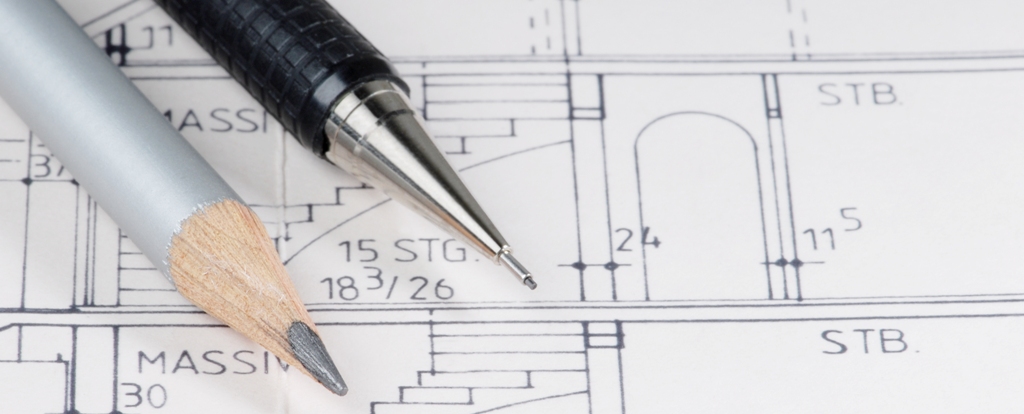Common mistakes on building drawings

|
Many types of drawing can be used during the design and construction of buildings, often prepared by different disciplines or teams, working separately from one another. There are several common mistakes that can be made when producing or interpreting drawings that can lead to costly delays and avoidable remedial work.
A simple but common mistake is drawings not being complete. This can be a particular problem where designers do not have the necessary experience, supervision, quality systems or time to produce the drawings required. Incomplete drawings can lead to requests for information and change orders when the work starts on site.
Designers may also omit some detailing during the design process, such as window details or roof construction details, intending to complete them later, and will instead provide notes about what that portion of the construction should consist of. This can become a problem If they do not return to update the drawings before construction begins.
Drawings may not be coordinated, in particular if they are prepared by different teams, for example, the information on structural drawings may not be consistent with ductwork drawings. This can result in 'clashes', such as ventilation ducts running through structural beams (a hard clash), or insufficient space for installation works or access for maintenance (a soft clash). To try and void this problem, the design team should regularly review all up-to-date working drawings to ensure that they coordinate accurately.
Building information modelling (BIM) can help prevent clashes. Clash detection software can identify clashes between different disciplines' BIM data and generate clash reports. However, this should not be relied upon as a fail-safe check, and should not be used to justify poor design co-ordination processes. For more information see: Clash avoidance.
There may also be inconsistencies between drawn information and written information, such as schedules or specifications. It is important therefore that information is not duplicated between different types of document, but rather that one refers to the other. For example, a drawing may include notes referring to additional details in specification clauses.
In terms of personal drawing style, designers may have in-house habits that are not understood by other teams or disciplines. This can lead to misinterpretation and mistakes. It is important therefore that drawings adopt standard methods and procedures for preparation, symbols, hatching, annotation and so on. These should be agreed at the outset so that early drawings do not have to be corrected. This is particularly important when drawings are prepared using computer aided design (CAD) or BIM. BIM can involve the federation of information prepared by multiple teams to create a single model. If the information is not created consistently, incompatibilities can emerge that can be costly and time consuming to correct.
In terms of technical details, common mistakes include:
- Incorrect or inconsistent scales being used across drawings.
- Doors opening the wrong way or with insufficient opening space (i.e. opening into other doors, cabinets, windows, etc.).
- Facilities located in impractical places.
- Undersized, impractical or awkward spaces.
- Poorly detailed junctions or abutments between different components or systems.
- Incorrect symbols.
- Inconsistent revision numbers.
- Poor reproduction.
- File exchange or conversion errors.
- Software incompatibilities.
- Un-buildable, or difficult to build elements.
- Missing components.
- Inconsistent information.
- Illegible writing.
- The use of acronyms that are not understood.
- Notes that are not understood.
[edit] Related articles on Designing Buildings
- Common mistakes in construction tenders.
- Common spelling mistakes in the construction industry.
- Defects.
- How to draw a floor plan.
- Manual drafting techniques.
- Perspective.
- Rotring.
- Symbols on architectural drawings.
- Technical drawing.
- Techniques for drawing buildings.
- Types of drawings.
- Working drawing.
Featured articles and news
CIOB report; a blueprint for SDGs and the built environment
Pairing the Sustainable Development Goals with projects.
Latest Build UK Building Safety Regime explainer published
Key elements in one short, now updated document.
UKGBC launch the UK Climate Resilience Roadmap
First guidance of its kind on direct climate impacts for the built environment and how it can adapt.
CLC Health, Safety and Wellbeing Strategy 2025
Launched by the Minister for Industry to look at fatalities on site, improving mental health and other issues.
One of the most impressive Victorian architects. Book review.
Common Assessment Standard now with building safety
New CAS update now includes mandatory building safety questions.
RTPI leader to become new CIOB Chief Executive Officer
Dr Victoria Hills MRTPI, FICE to take over after Caroline Gumble’s departure.
Social and affordable housing, a long term plan for delivery
The “Delivering a Decade of Renewal for Social and Affordable Housing” strategy sets out future path.
A change to adoptive architecture
Effects of global weather warming on architectural detailing, material choice and human interaction.
The proposed publicly owned and backed subsidiary of Homes England, to facilitate new homes.
How big is the problem and what can we do to mitigate the effects?
Overheating guidance and tools for building designers
A number of cool guides to help with the heat.
The UK's Modern Industrial Strategy: A 10 year plan
Previous consultation criticism, current key elements and general support with some persisting reservations.
Building Safety Regulator reforms
New roles, new staff and a new fast track service pave the way for a single construction regulator.
Architectural Technologist CPDs and Communications
CIAT CPD… and how you can do it!
Cooling centres and cool spaces
Managing extreme heat in cities by directing the public to places for heat stress relief and water sources.
Winter gardens: A brief history and warm variations
Extending the season with glass in different forms and terms.
Restoring Great Yarmouth's Winter Gardens
Transforming one of the least sustainable constructions imaginable.























